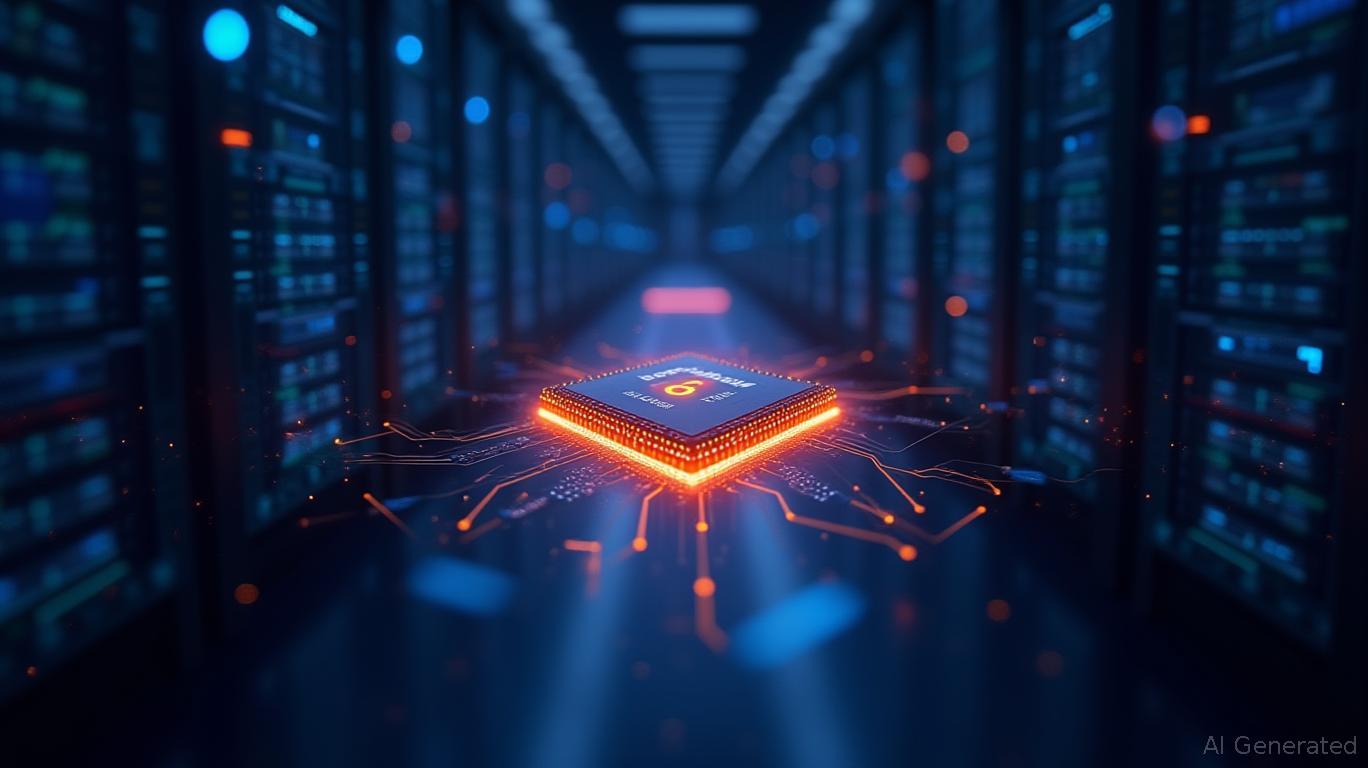Broadcom's AI Chip Dominance: A Core Holding for the AI Infrastructure Boom
Broadcom (AVGO) is cementing its position as a linchpin of the AI revolution, leveraging its hyperscaler partnerships and next-generation chips to capitalize on soaring demand for advanced infrastructure. With its $5.1 billion Q3 AI revenue guidance and the launch of the industry-leading Tomahawk 6 networking chip, the company is well-positioned to sustain its 10-quarter AI revenue growth streak—a record that underscores its strategic advantage over rivals. For investors, this is a rare opportunity to own a stock that combines scale, innovation, and recurring cash flows in one of tech's most critical sectors.
The AI Infrastructure Tsunami and Broadcom's Play
The global race to build AI infrastructure—driven by hyperscalers like Amazon, Microsoft, and Google—is creating a multi-front opportunity for
. These companies are investing billions to expand data centers, train large language models, and deploy edge computing systems. Broadcom's Tomahawk 6, the world's first 102.4 Tbps Ethernet switch chip, is a critical enabler of this shift. Its ability to support over 1 million accelerator chips in a single network at 200 Gbps speeds makes it indispensable for hyperscalers scaling AI clusters to handle everything from recommendation engines to generative AI.
The Tomahawk 6: A Technical Masterstroke
The Tomahawk 6 isn't just a chip—it's a systems-level breakthrough that combines bandwidth, efficiency, and AI-specific features. Key advantages include:
- Unmatched Bandwidth: 102.4 Tbps switching capacity doubles the next-fastest competitor, enabling hyperscalers to build denser, faster networks.
- AI-Optimized Routing: Cognitive Routing 2.0 uses real-time congestion control and telemetry to manage complex workloads like large language models.
- Cost Efficiency: By unifying scale-up and scale-out networking, it reduces capital expenditures by 15–25% compared to proprietary alternatives.
This technology directly addresses hyperscalers' pain points. For instance, Google's data centers require ultra-low latency for AI inference, while Amazon's AWS and Microsoft's Azure need scalable fabrics to support cloud customers. The chip's support for co-packaged optics (CPO) further reduces power consumption and latency, aligning with hyperscalers' sustainability goals.
Hyperscaler Partnerships: The Quiet Catalyst
While Broadcom's earnings calls avoid naming specific hyperscalers, the math is clear: the $5.1 billion Q3 AI revenue target is underpinned by exclusive ties with the world's largest cloud providers. These partnerships are rooted in three pillars:
1. Open Standards Compliance: Tomahawk 6 adheres to the Ultra Ethernet Consortium's (UEC) specifications, avoiding vendor lock-in—a must for hyperscalers.
2. Vendor-Neutral Ecosystems: Broadcom's collaboration with firms like Arista and Juniper ensures its chips integrate seamlessly into hybrid cloud environments.
3. Hyperscaler-Specific Design: Features like 512-XPU scale-up support and 128,000-GPU scale-out topologies are tailored to the needs of hyperscalers' massive AI deployments.
Analysts at Dell'Oro Group note that Ethernet is now displacing InfiniBand in AI networks, a shift Broadcom is leading. “Tomahawk 6's open architecture and performance make it the default choice for hyperscalers expanding AI infrastructure,” said one analyst.
Financials: A Cash Machine with Room to Grow
Broadcom's Q2 results underscore its financial resilience:
- Revenue: $15.8 billion (up 21% YoY), with AI chips contributing $4.4 billion (+46% YoY).
- Free Cash Flow: $6.41 billion (+44% YoY), funding $7 billion in dividends and buybacks.
- Margins: Adjusted EBITDA at 66% of revenue, reflecting operational discipline.
The stock's 12% YTD rise reflects investor confidence, but the recent post-earnings dip to $248.38 (despite record cash flow) presents a buying opportunity. With a 5.1% dividend yield and a track record of shareholder returns, Broadcom offers both growth and income.
Risks and Competition: Can Broadcom Stay Ahead?
Nvidia's Quantum-X and Spectrum-X switches pose a threat, but Broadcom's open standards and hyperscaler partnerships are a moat. Competitors like AMD and Intel are also chasing this market, but Broadcom's decade-long leadership in enterprise networking gives it an edge. Risks include CPO adoption delays and hyperscaler spending cuts, but with AI capex projected to grow 20% annually through 2027, the tailwind remains strong.
Investment Thesis: A Core Holding for the AI Era
Broadcom is not just a chipmaker—it's the logistics backbone of the AI economy. Its Tomahawk 6 and partnerships with hyperscalers create a defensible moat in a fragmented market. With AI revenue set to hit $5.1 billion in Q3 (and growing), its free cash flow machine, and a dividend that's increased every year since 2013, this stock is a buy for investors seeking exposure to the AI boom.
Recommendation: Hold or accumulate shares. The $5.1 billion guidance is achievable given hyperscaler momentum, and the stock's P/E of 21x is reasonable for a company with 20%+ revenue growth. Investors should monitor hyperscaler capex trends and Tomahawk 6's CPO adoption, but the long-term thesis is clear: Broadcom is the Intel of AI infrastructure—a core holding for the decade.

Comments
No comments yet